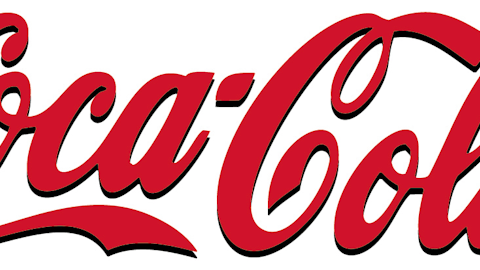Since its IPO burned a lot of early investors, Facebook Inc (NASDAQ:FB)’s stock has suffered from a cloud of pessimism. Any news on the company is rarely viewed favorably. Year-to-date, the stock is down more than 16% while the S&P 500 has climbed 11.5%. This makes shares attractive once again, as the market has beaten down the stock based on several concerns that I believe they’re making too much of.

Market saturation
One of the biggest fears I see is that Facebook Inc (NASDAQ:FB) has saturated its most profitable markets. North America provided nearly 50% of the company’s revenue when it went public, that number fell to 46.5% last quarter. That’s not a bad thing, but the 6.6% growth in monthly active users from the U.S. and Canada is used to scare investors.
The average U.S. or Canadian Facebooker (my mom’s term) generates $3.50 in revenue per quarter. Europe generates $1.60, Asia generates $0.64, and the rest of the world generates $0.50.
Many are concerned that Facebook Inc (NASDAQ:FB)’s current position in the North American and European markets will limit its growth potential. It doesn’t deserve a forward PE of 30, as growth will be much slower than in the past.
Meanwhile, Starbucks Corporation (NASDAQ:SBUX), a company that screams saturation in the North American market, is growing just fine according to the market. Last quarter, Starbucks grew its Americas Segment revenue by 10% and its operating income 22%. Those numbers reflect Starbucks Corporation (NASDAQ:SBUX) locations only, not Seattle’s Best, Tazo Retail, Teavana, or Evolution Fresh.
While Starbucks Corporation (NASDAQ:SBUX)’s forward PE is lower than Facebook Inc (NASDAQ:FB)’s at about 24, its growth is expected to be slightly slower, resulting in a PEG of 1.6. Comparatively, Facebook Inc (NASDAQ:FB) trades at a PEG of 1.4. Facebook Inc (NASDAQ:FB) has a much smaller earnings base to grow off, so meeting analysts’ growth estimates is certainly feasible.
Considering a North American user is worth more than twice as much as a European user, and five times as much as an Asian user to Facebook, even slow user growth in the region can still have a significant impact on its revenue growth.
This concern also implies that Facebook is unable to increase the amount of revenue or profit it makes per user. That is most certainly not a static number. That would be like assuming Starbucks Corporation (NASDAQ:SBUX) can’t increase same-store sales.
Last quarter, the average revenue per user grew 12% year over year. The company saw similar growth in the prior quarter. It has done this even while the most profitable market is becoming saturated, indicating the company is finding ways to better monetize its users.
Mobile
Despite growing mobile revenue from 0% of the company’s total to 30% in the span of a year, investors are still worried that the revenue stream isn’t growing fast enough. Mobile-only monthly active users have grown 128% in 2013, compared to 26% for total active users. With more people accessing Facebook exclusively through their phones and tablets, Facebook ought to be seeing better growth in mobile revenue.
Mobile ad rates continue to drag well below desktop ad rates, causing a drag on operating margin. Last quarter, operating margin fell to 26% compared to 36% in the same period a year ago.
But, mobile ad-spend is quickly growing, and more money is being funneled into content producers like Facebook than ad networks like Google Inc (NASDAQ:GOOG)’s AdMob.
Publishers controlled 52% of U.S. mobile display ad spending in 2012 compared to 39% in 2011. Facebook’s mobile display advertising revenue in 2012 — $234 million — was nearly as much as the $243 million Google Inc (NASDAQ:GOOG)’s mobile ad network brought in. Of course, Google also made more than $2 billion from mobile search ads.
Meanwhile, Facebook has been able to make up the difference. Advertising revenue was up 43% in the first quarter to $1.46 billion. That’s the company’s fastest growth rate since the end of 2011. Tough year-on-year comparisons may prevent it from reaching similar rates in the coming quarters, but Facebook is certainly growing ad revenue despite users moving to mobile.
In the long run, Facebook could make its own mobile display ad network. I believe the company’s acquisition of Atlas from Microsoft earlier this year will give it a leg up in both developing a network and increasing mobile ad rates. But, COO Sheryl Sandberg has indicated it’s not really a priority.
Growing concerns
Facebook is doing a great job of managing its problems, and turning weak points into strengths. It ought to be able to continue growing North American revenue at a moderate pace, while it expands rapidly in Asia, the Middle East, and Africa. Its mobile revenue growth is outpacing others in the industry, as average revenue per user continues to grow despite more people using mobile devices to access Facebook.
I believe the pessimism surrounding the stock has created another great buying opportunity for a company with smart management with plenty of capabilities to continue growing earnings.
The article Lifting the Cloud of Pessimism originally appeared on Fool.com.
Adam Levy owns shares of Starbucks. The Motley Fool recommends Facebook, Google, and Starbucks. The Motley Fool owns shares of Facebook, Google, and Starbucks. Adam is a member of The Motley Fool Blog Network — entries represent the personal opinion of the blogger and are not formally edited.
Copyright © 1995 – 2013 The Motley Fool, LLC. All rights reserved. The Motley Fool has a disclosure policy.





